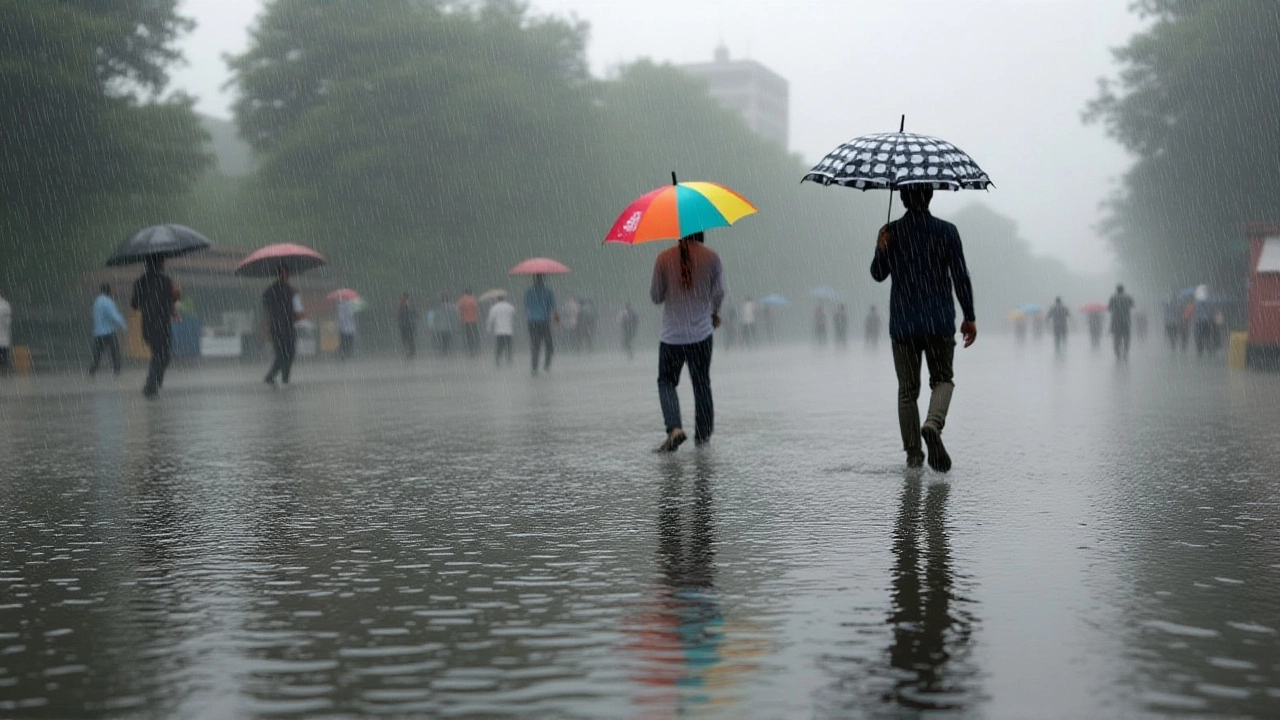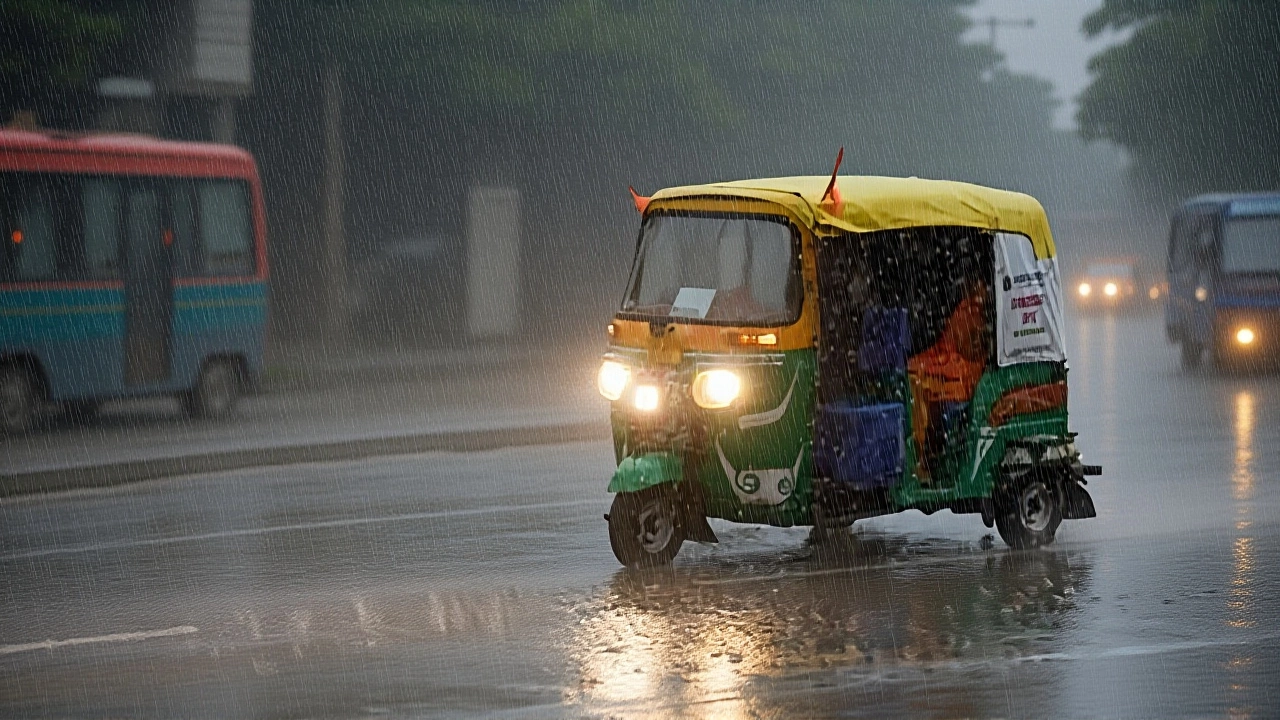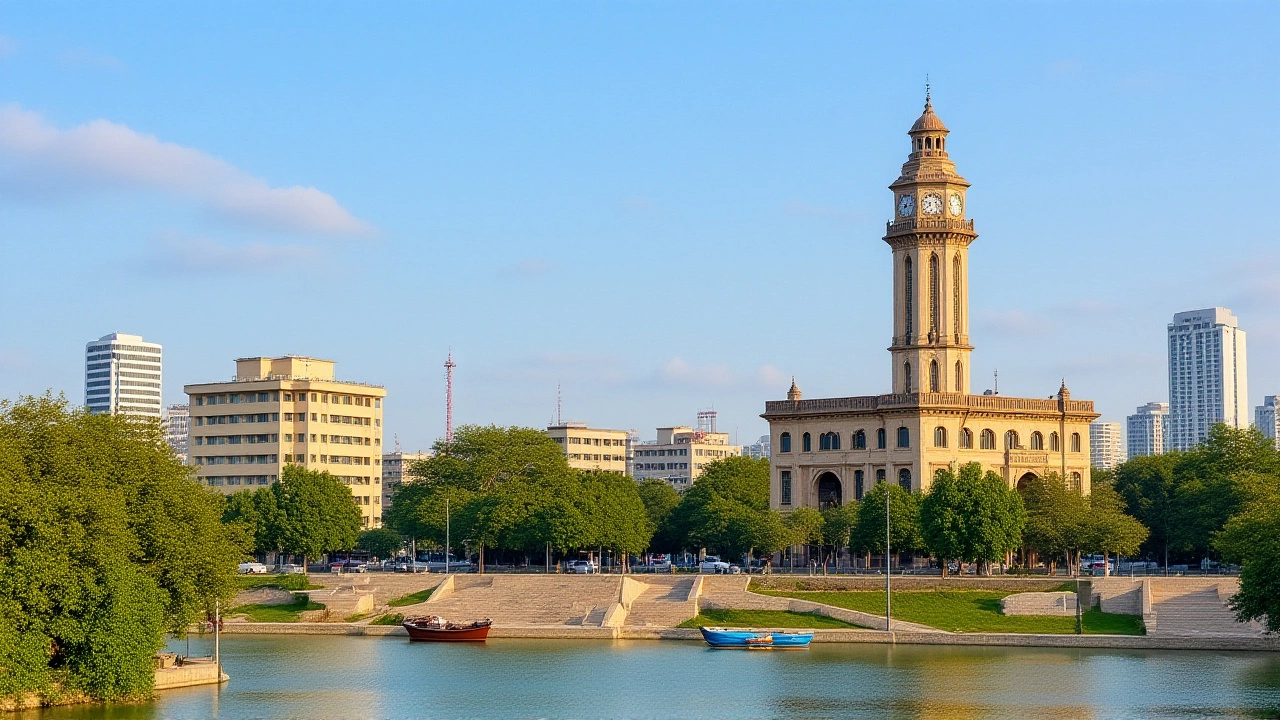As October 2025 unfolds in Kanpur, residents are noticing a quiet but significant shift in the air — the scorching heat of September has given way to a slow, steady cool-down, and the first real rain in weeks is expected by month’s end. The transition isn’t dramatic, but it’s unmistakable: days that started at 34°C in the first week are ending near 25°C, and the humidity that clung to skin like a damp shawl is finally lifting. For a city where outdoor labor, street markets, and school routines are dictated by the weather, these changes aren’t just background noise — they’re life-altering.
From Heatwave to Gentle Autumn
The first half of October 2025 in Kanpur felt like an extension of summer. Highs consistently hit 33–34°C (91–93°F), with October 5 and 6 recording the warmest days of the month. But by October 15, the mercury began its steady decline. By October 28, the high had dropped to 23°C (73.4°F), according to AQI.in, the most detailed source tracking day-by-day shifts. That’s a 11°C (20°F) drop in just three weeks — a pace faster than the 10-year average for the region. The drop isn’t just noticeable; it’s felt. Elderly residents report fewer heat-related hospital visits. Farmers are adjusting irrigation schedules. Even school buses are running with windows open instead of AC cranked up.The Chaudhary Charan Singh Airport weather station, the official data hub for WeatherSpark.com, confirmed the shift. On October 25, the station recorded a high of 27°C (81°F) with light winds and mostly clear skies — a typical mid-month day. But by October 28, the same station noted a drop to 20°C (68°F) at dawn, with dew point rising slightly, signaling the approach of moisture-laden air from the west.
Rainfall: A Late Surprise
Contrary to early predictions of a dry October, rainfall is making a late entrance. While Climate-Data.org and Weather25.com initially estimated only 2–3 rainy days, EasyWeather.com flagged October 30 as a turning point — forecasting 4.1 mm of rain, the highest single-day total of the month. That’s not a downpour, but it’s enough to dampen the dusty streets, refill small reservoirs, and trigger a spike in mosquito activity. The total monthly rainfall, averaging 31 mm (1.2 inches), aligns closely with the 15-year norm for October in Kanpur, but the timing is unusual. Most years, the rain comes in early October; this year, it’s holding back until the final weekend.For farmers in the surrounding districts of Uttar Pradesh, this delay is a concern. Rabi crop sowing — wheat, mustard, and barley — typically begins in late October. A dry spell through the 25th means fields are parched. The rain on the 30th won’t be enough to fully saturate the soil, but it’s enough to give farmers a green light to start planting. "We’ve been waiting," said Rajesh Yadav, a 52-year-old grain grower from the Kalyanpur area. "One good shower now, and we’re back on track. Two more, and we might even avoid the diesel pumps this season."

What the Numbers Don’t Tell You
The data paints a clear picture: 17 sunny days, 3 cloudy, 11 with some rain, zero snow. But the human experience is more nuanced. On October 28, when the high hit 23°C, families took children to the Kanpur Zoo for the first time since June. Street vendors selling hot chai and roasted peanuts reported a 40% sales bump. The UV index, recorded at 0 on October 30 by AQI.in, dropped from an average of 8–9 in early October — a sign the sun’s angle has shifted, and the protective power of the atmosphere is increasing.Wind patterns, too, are changing. On October 25, winds were light — 2.3 mph, barely stirring the leaves. But by the 30th, AQI.in recorded a 10.1 km/h breeze from the northeast — a shift that’s bringing in drier air from the Himalayan foothills. That’s good for air quality. Kanpur’s AQI, which hovered in the "Unhealthy" range (150–200) in September, dropped to 89 on October 30 — "Moderate." For the 3.2 million people living here, that’s not just a number. It’s fewer coughs, fewer asthma inhalers used, fewer missed school days.
Why This Matters Beyond the Calendar
This isn’t just weather. It’s a rhythm. In Kanpur, where 60% of the workforce is in agriculture, construction, or street-based trade, temperature swings dictate income, health, and safety. A sudden drop in October can mean the difference between a successful harvest and a lost season. A late rain can mean the difference between a child getting sick with dengue or staying healthy.Climate models for northern India show October temperatures rising by 0.8°C per decade since 1990. But 2025’s pattern — a warm start, a sharp drop, a late rain — is not yet a trend. It’s a variation. Still, it’s a reminder: even small shifts in timing can ripple through daily life. What looked like a routine forecast became a quiet emergency for farmers, a relief for the elderly, and a welcome change for school nurses.

What’s Next?
November 2025 is expected to bring further cooling, with highs settling near 25°C and lows dipping below 15°C. The real test will come in early November, when the first frost is predicted for rural areas outside the city. If the pattern continues — late rain, cooler nights, clearer skies — Kanpur could see its most comfortable autumn in a decade. But meteorologists warn: with climate volatility increasing, what feels like a "normal" October today may be a rarity tomorrow.Frequently Asked Questions
Why is October 2025’s rainfall coming so late in Kanpur?
The delayed rain is likely tied to a sluggish monsoon withdrawal and shifting jet stream patterns over northern India. Historically, October rainfall in Kanpur peaks in the first week, but 2025’s pattern mirrors 2019 and 2021 — years when the monsoon lingered over central India, delaying moisture arrival in Uttar Pradesh. This isn’t unprecedented, but it’s becoming more frequent.
How does this weather affect public health in Kanpur?
The drop in temperature and humidity reduces heat stress, lowering ER visits for dehydration and heatstroke. The improved air quality (AQI dropping from 180 to 89) means fewer asthma and bronchitis cases. However, the late rain raises humidity slightly, increasing mosquito breeding — a concern for dengue and chikungunya, which typically peak in October-November in urban centers like Kanpur.
Is the cooling trend in October 2025 part of a larger climate shift?
Not yet. While average October temperatures in Kanpur have risen 1.2°C since 2000, this year’s sharp drop is an anomaly — not a trend. Climate scientists note that extreme variability — hot spells followed by sudden cool-downs — is increasing, but long-term warming continues. What we’re seeing is climate chaos, not cooling.
Why is there no snow in Kanpur during October?
Kanpur sits at just 123 meters above sea level in the Gangetic Plain, far from the Himalayas. Even in winter, temperatures rarely dip below 5°C. Snow is physically impossible here — not due to climate change, but geography. The idea of snow in October is a myth, even in cold years. All forecasting models confirm zero snowy days, as expected.
How accurate are the daily forecasts for Kanpur in October 2025?
Day-to-day forecasts from AQI.in and AccuWeather are reliable within ±2°C for temperature and ±1 mm for rainfall, based on historical accuracy. But beyond 7–10 days, confidence drops sharply. The 30-day outlook is a statistical average — useful for planning, not precision. The actual rain on October 30 could be 2 mm or 6 mm — the forecast is a probability, not a promise.
What should residents do differently this October?
Wear light layers in the mornings and evenings — the 20°C nights require more than a t-shirt. Keep hydration handy, even if it’s not hot — cooler air can still cause dehydration. Farmers should start sowing Rabi crops immediately after the October 30 rain. Everyone should monitor AQI levels daily; the improvement is real, but pollution spikes can return quickly with wind shifts.
